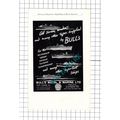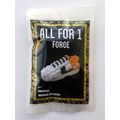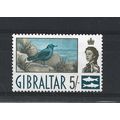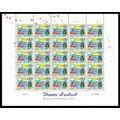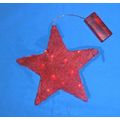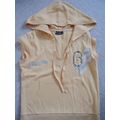Knight, Laura - Miss Thompson (Patricia) - art postcard (Nottingham Castle)
- Condition : Unused
- Dispatch : Next Day
- Brand : None
- ID# : 216753133
- Quantity : 1 item
- Views : 211
- Location : United Kingdom

- Seller : justthebook (+1704)
- Barcode : None
- Start : Sun 07 May 2023 15:59:24 (BST)
- Close : Run Until Sold
- Remain : Run Until Sold
More Listings from This Seller view all
Seller's Description
- Art Postcard
- Work of art title: Miss Thompson (Miss Patricia Thompson), 1932
- Artist (if known): Dame Laura Knight
- Media or other details: painting
- Publisher / Gallery: Nottingham Castle
- Postally used: no
- Stamp & postmark details (if relevant):
- Size: slightly larger than 'modern/
- Notes & condition details:
NOTES:
Size: 'Modern' is usually around 6in x 4in or larger / 'Old Standard' is usually around 5½in x 3½in. Larger sizes mentioned, but if you need to know the exact size please ask as this can vary.
All postcards are not totally new and are pre-owned. It's inevitable that older cards may show signs of ageing and use, particularly if sent through the post. Any faults other than normal ageing are noted.
Stock No.: OS13
Please ask if you need any other information and I will do the best I can to answer.
------------------------------------------------
Postage and packing charge should be showing for your location (contact if not sure).
UK - PayPal, Cheque (from UK bank) or postal order
I will give a full refund if you are not fully satisfied with the postcard.
----------------------------------------------
Dame Laura Knight DBE RA RWS (née Johnson; 4 August 1877 – 7 July 1970[1]) was an English artist who worked in oils, watercolours, etching, engraving and drypoint. Knight was a painter in the figurative, realist tradition, who embraced English Impressionism. In her long career, Knight was among the most successful and popular painters in Britain. Her success in the male-dominated British art establishment paved the way for greater status and recognition for women artists.[2]
In 1929 she was created a Dame, and in 1936 became the second woman elected to full membership of the Royal Academy.[3] Her large retrospective exhibition at the Royal Academy in 1965 was the first for a woman. Knight was known for painting amidst the world of the theatre and ballet in London, and for being a war artist during the Second World War. She was also greatly interested in, and inspired by, marginalised communities and individuals, including Romani people and circus performers.[2][4]
Biography
Early life
Laura Johnson was born in Long Eaton, Derbyshire, the youngest of the three daughters of Charles and Charlotte Johnson.[5] Her father abandoned the family not long after her birth, and Knight grew up amid financial problems.[6][7] Her grandfather owned a lace-making factory but the advent of new technology led to the business going bankrupt. The family had relations in northern France who were also in the lace-making business and in 1889 Knight was sent to them with the intention that she would eventually study art at a Parisian atelier. After a miserable time in French schools, the bankruptcy of her French relations forced Knight to return to England.[6]
Charlotte Johnson taught part-time at the Nottingham School of Art, and managed to have Knight enrolled as an 'artisan student' there, paying no fees, aged just 13.[2][8] At the age of fifteen, and still a student herself, Knight took over her mother's teaching duties when Charlotte was diagnosed with cancer and became seriously ill.[6] Later, Laura won a scholarship and the gold medal in the national student competition held by the then South Kensington Museum. She continued to give private lessons after she left the School of Art, as both she and her sister Evangeline Agnes, known as Sissie, had been left to live alone on very little money, after the deaths of their mother, their sister Nellie and both their grandmothers.[8] At the School of Art, Laura met one of the most promising students, Harold Knight, then aged 17, and determined that the best method of learning was to copy Harold's technique.[5] They became friends, and married in 1903.[9]
Staithes and Laren
In 1894, the couple visited Staithes, a fishing village on the Yorkshire coast, for a holiday and soon returned, accompanied by her sister Evangeline Agnes, to live and work there. In Staithes Laura drew the people of the fishing village and the surrounding farms, showing the hardship and poverty of their lives. She made studies, paintings and watercolours, often painting in muted, shadowy tones. Lack of money for expensive materials meant she produced few oil paintings at this time. Local children would sit for her, for pennies, giving her the opportunity to develop her figure painting technique. Less successful at this time were her landscape and thematic works. Although she painted on the moors, high inland from Staithes, she did not consider herself successful at resolving these studies into finished pieces. Later she recalled:
Even though my studio was so often warmed by burning canvases and drawings I do not regret all the experimental work done and destroyed. Staithes was too big a subject for an immature student, but working there I developed a visual memory which has stood me in good stead ever since.
Laura Johnson and Harold Knight married in 1903 and made their first trip to the Netherlands in 1904. They spent six weeks there that year and six months there in 1905. They visited the artists colony at Laren. The colony was a group of followers of the Hague School of artists who had been painting in remote rural communities since the 1850s. The Knights made a third trip to Laren in 1906 before spending that winter in Yorkshire.[8]
Cornwall
In late 1907 the Knights moved to Cornwall, staying first in Newlyn, before moving to the nearby village of Lamorna.[10] There, alongside Lamorna Birch and Alfred Munnings, they became central figures in the artists colony known as the Newlyn School.[11] By March 1908 both had work exhibited at the Newlyn Art Gallery and Harold Knight was an established professional portrait painter, while Laura Knight was still developing her art. Around Newlyn the Knights found themselves among a group of sociable and energetic artists, which appears to have allowed the more vivid and dynamic aspects of Laura's personality to come to the fore.[12][13]
Laura Knight spent the summer of 1908 working on the beaches at Newlyn making studies for her large painting of children in bright sunlight. The Beach was shown at the Royal Academy in 1909, and was considered a great success, showing Laura painting in a more Impressionist style than she had displayed previously.[8] Around this time she began painting compositions of women in the open air, in the plein-air manner, often on the rocks or cliff-tops around Lamorna.[14] Knight would sometimes use models from London who were prepared to pose nude. Although there was some resentment locally about this, the landowner, Colonel Paynter of Boskenna, was fully supportive and allowed Knight and the other artists a free rein.[13] Daughters of the Sun, which showed several women, some naked, sitting by a coastal inlet was completed in 1911 and well received when shown at the Royal Academy.[15] It is now only known from photographs but was considered to be a challenge to the then prevaling attitudes towards female nudity and aroused considerable controversey when included in a touring exhibition. The painting was badly damaged during World War I and was eventually destroyed by mould.[16] In recent years, examples of Knight's plein-air compositions from Cornwall have attracted high prices at auction.[17]
Another work from this time is The Green Feather, which Knight painted, and reworked due to a change in the weather, outdoors in a single day and shows the model Dolly Snell in an emerald evening dress with a hat and a large feather.[12] Knight sent the painting to an international exhibition held at the Carnegie Institute in Pittsburgh and it was purchased by the National Gallery of Canada for £400.[1] Knight started the vast painting Lamorna Birch and his Daughters in 1913, painting in a wood in the Lamorna Valley but then kept the painting unfinished in her studio until finally completing it in 1934, the same year Birch was elected a full member of the Royal Academy.[15]
Listing Information
| Listing Type | Gallery Listing |
| Listing ID# | 216753133 |
| Start Time | Sun 07 May 2023 15:59:24 (BST) |
| Close Time | Run Until Sold |
| Starting Bid | Fixed Price (no bidding) |
| Item Condition | Unused |
| Bids | 0 |
| Views | 211 |
| Dispatch Time | Next Day |
| Quantity | 1 |
| Location | United Kingdom |
| Auto Extend | No |

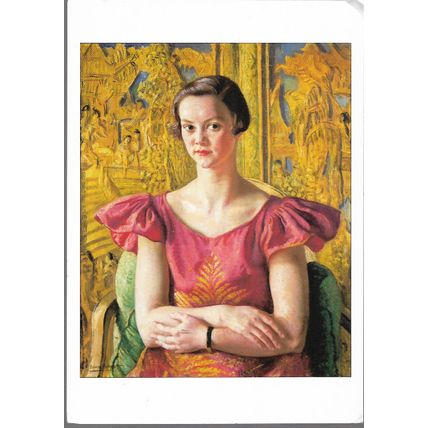

 for 1 item(s)
for 1 item(s)







